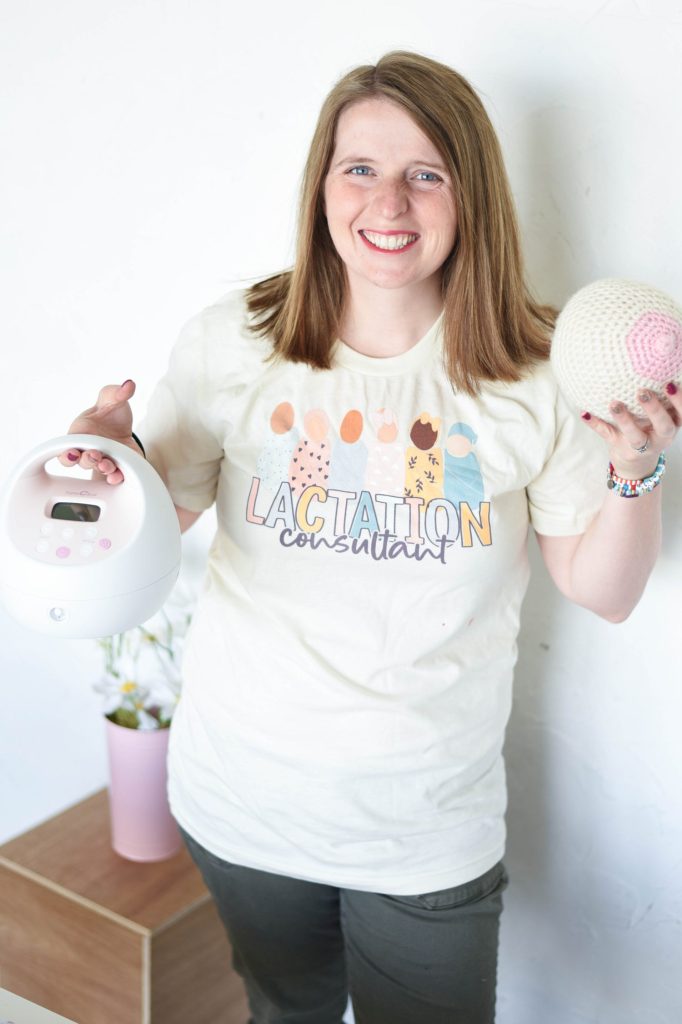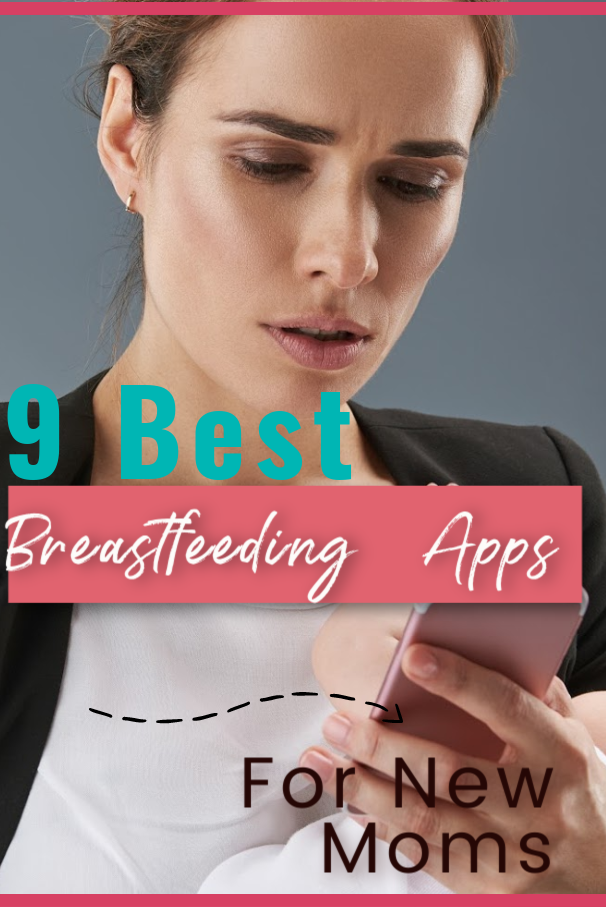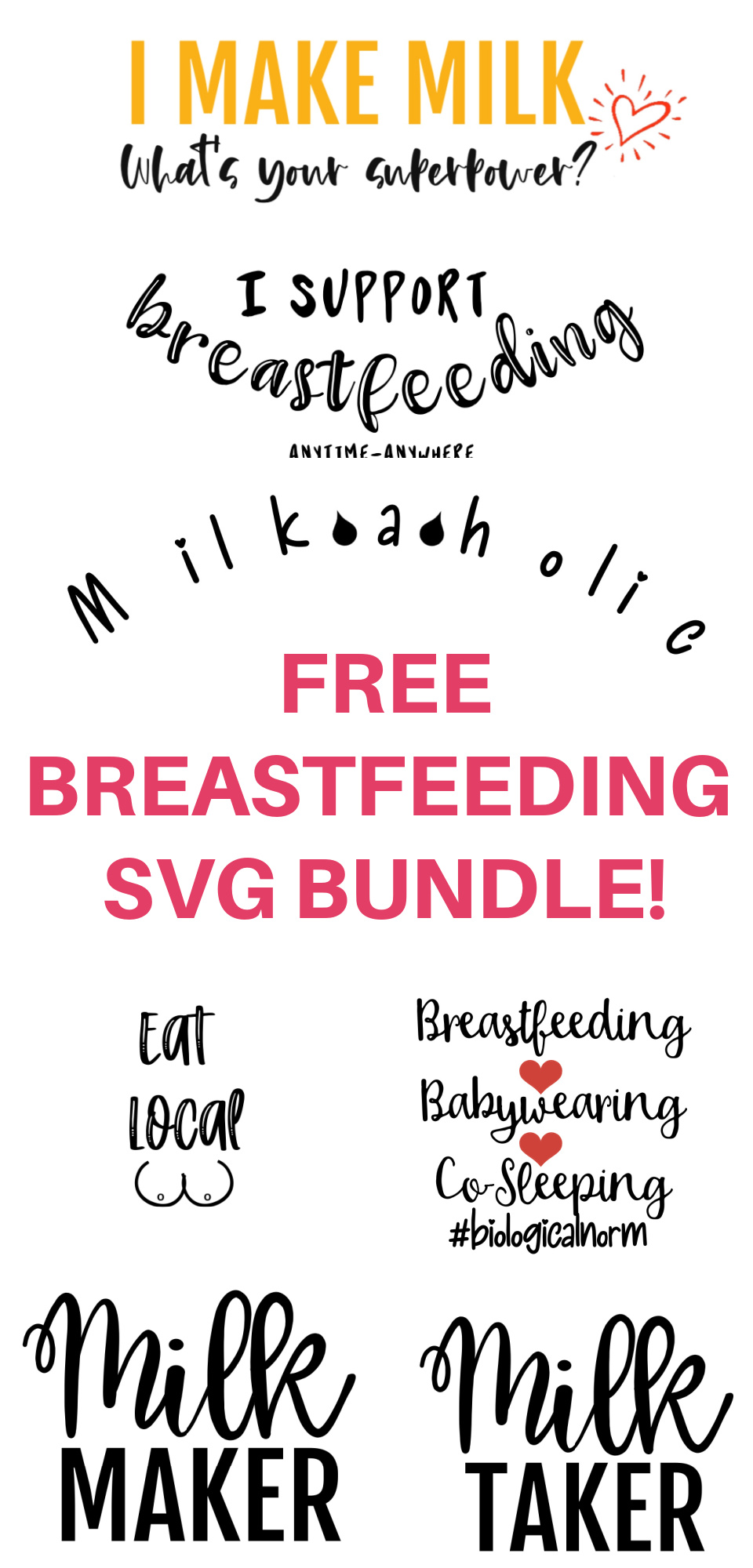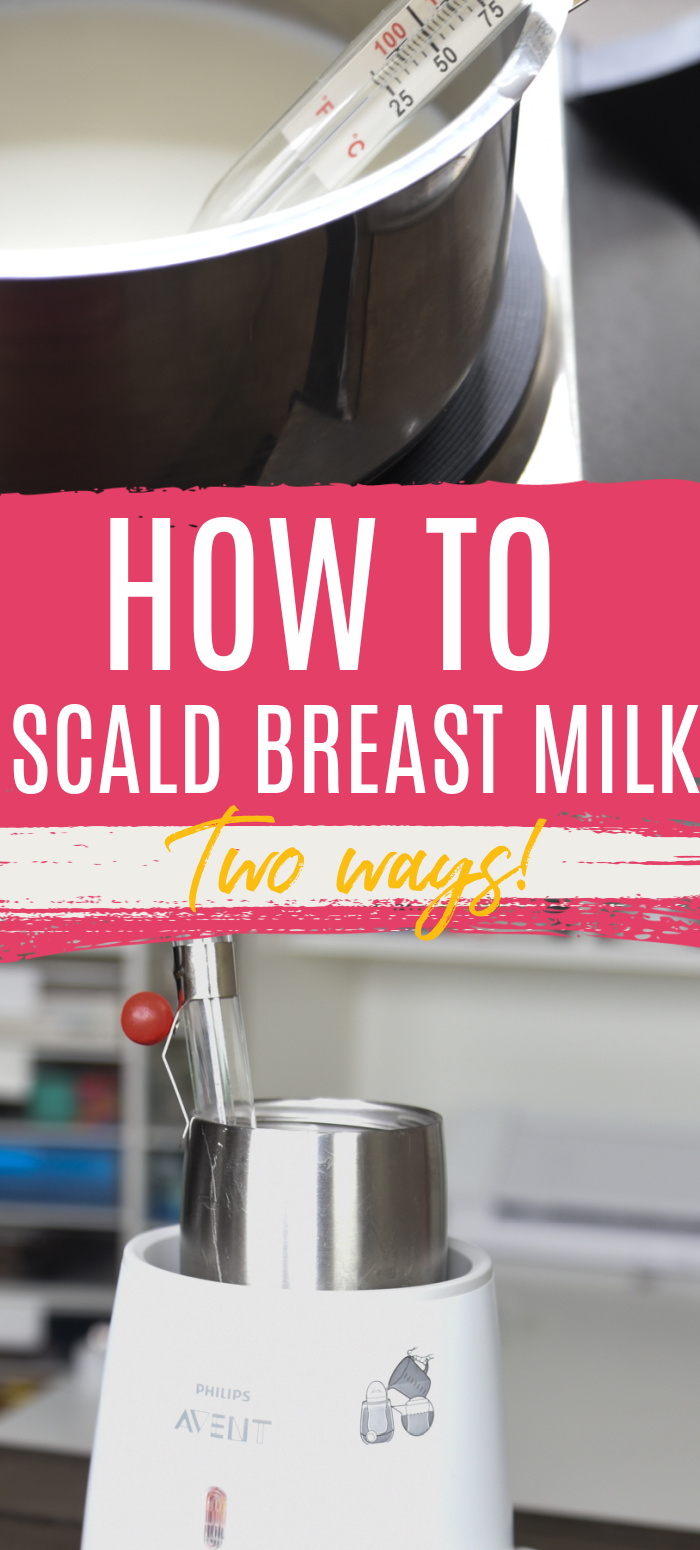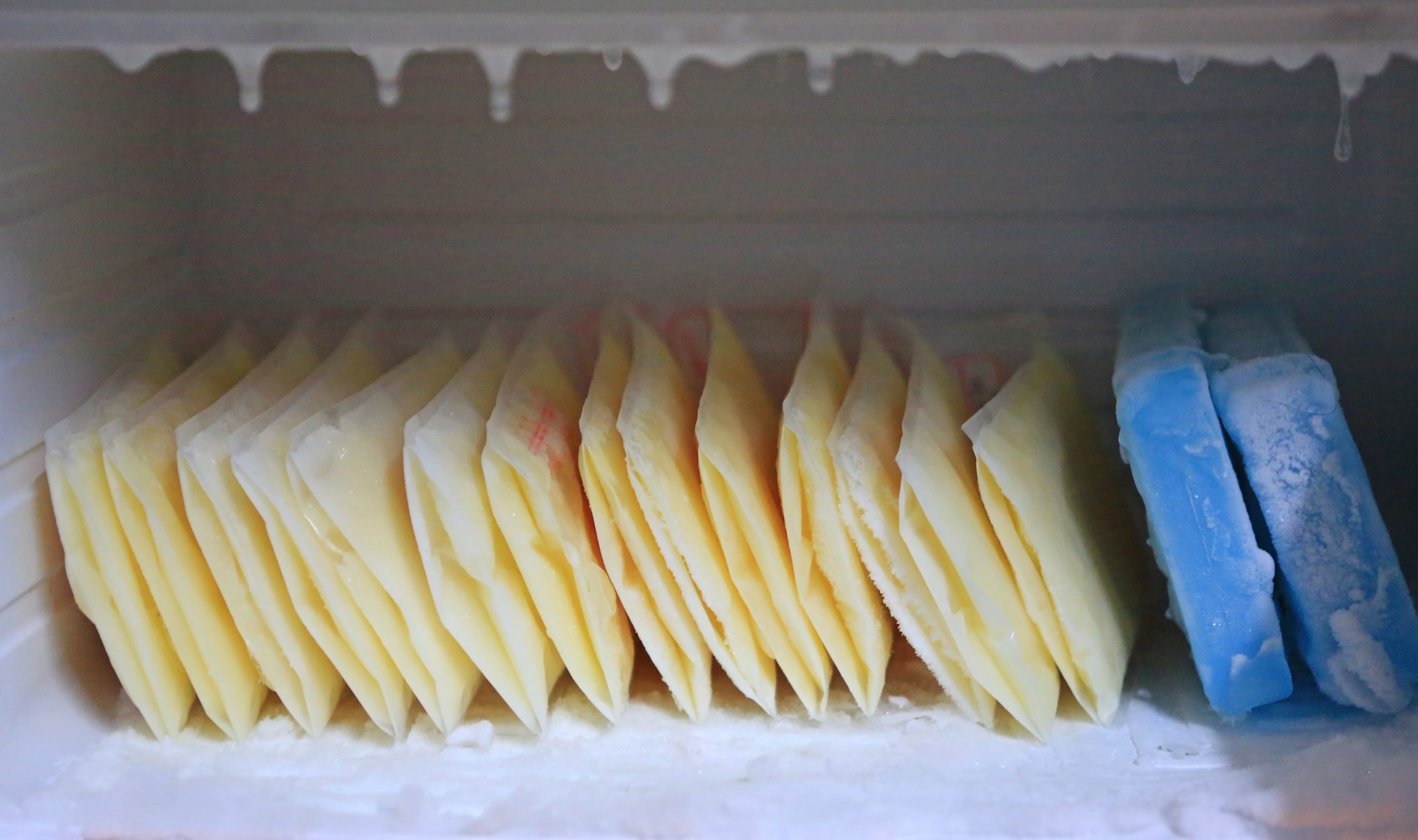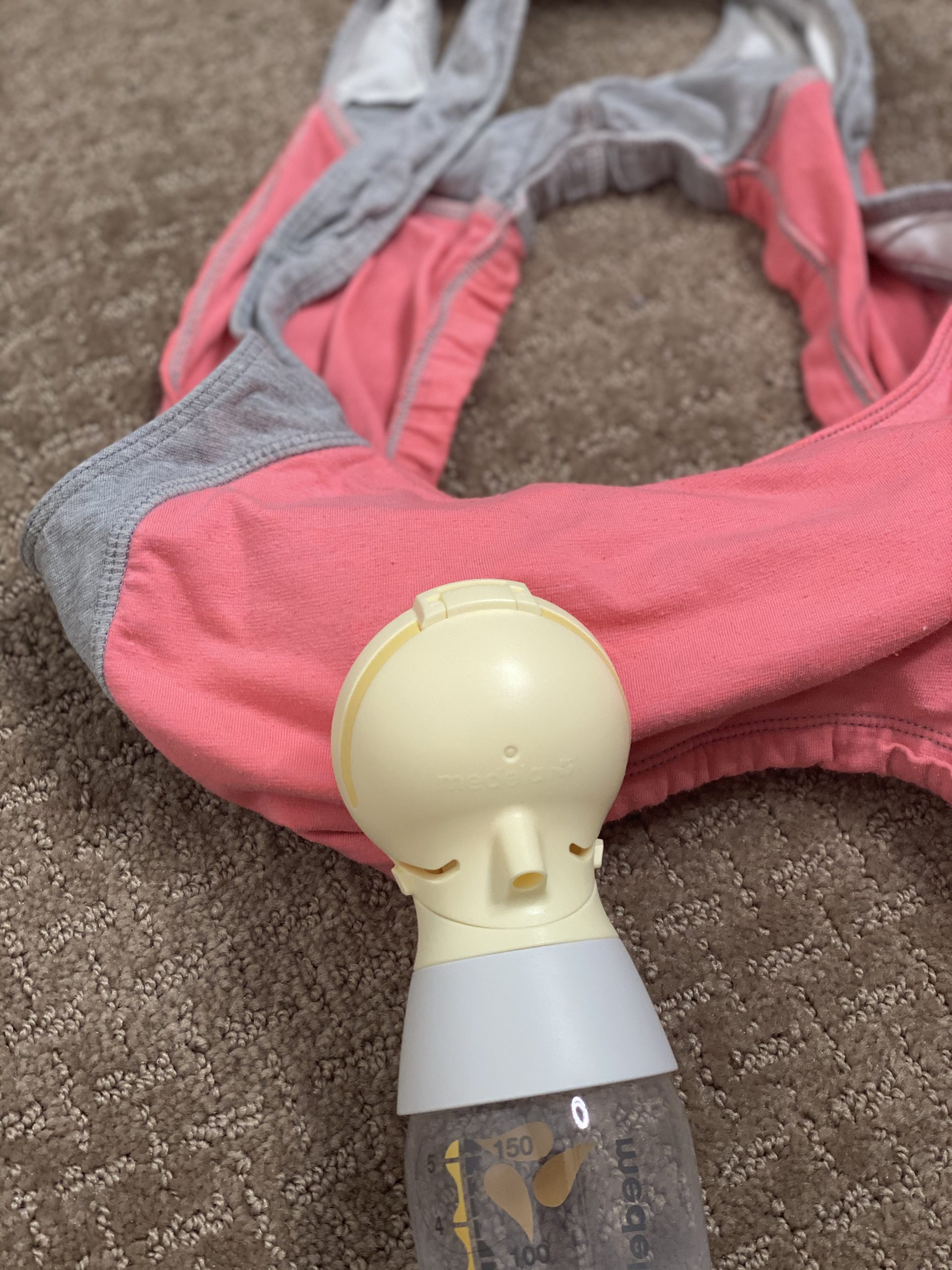Breastfeeding is an excellent option for providing your baby with nutrients and a close bond. However, there are certainly going to be situations where you aren’t available to directly nurse your baby and you may need someone else to feed them your breastmilk or formula via a bottle. This is where paced bottle feeding comes into play – here is how to bottle feed a breastfed baby to prevent a bottle preference and overfeeding
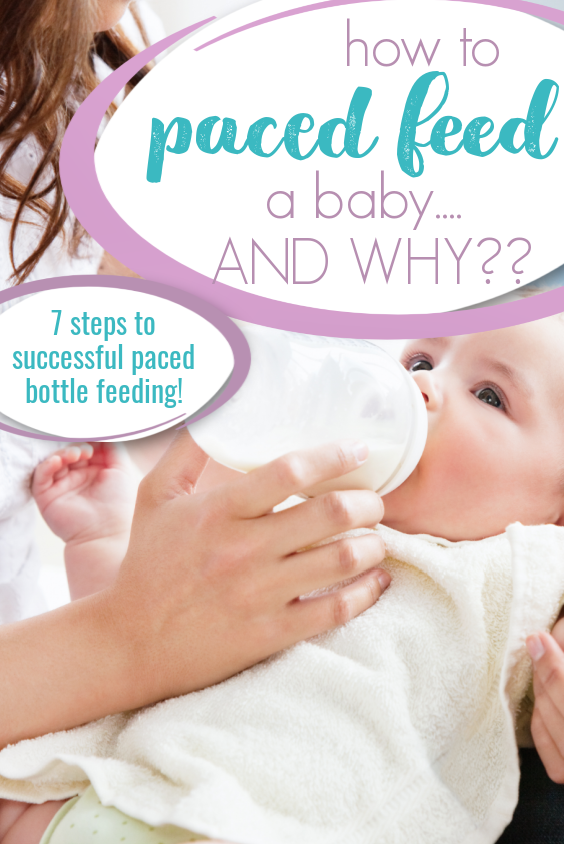
How to Paced Bottle Feed
For many breastfeeding moms, feeding a bottle might become a part of their day to day life to their breastfed baby. You may need to go back to work, give a supplement, or you may just given one here and there so you can leave your child with someone else.
It is very possible to switch back and forth between the bottle and the breast and many parents do it on a regular basis. However, it is important to understand that feeding breastfed babies a bottle should be done carefully. Chances are – the way you’ve seen a baby fed a bottle really isn’t ideal for breastfeeding babies.
A new parent is bombarded with all sorts of information, and unfortunately, how to feed a breastfed baby a bottle isn’t always shared. If you were fortunate enough to work with a lactation consultant before your baby was born or soon after, they likely instructed you on this method. However, this isn’t usually the case. It is one of the most important things a new parent can learn, though, in my opinion.
In this article, you will learn some helpful tips about how to feed your breastfed baby a bottle in a way that supports the breastfeeding mother and the breastfed baby, tips for giving a bottle, the best bottles to use, and more.
Breastfeeding comes with its challenges – but preparation can make all the difference. Make sure you signup for “The Complete Online Breastfeeding Class” where you will learn everything you need to know
- How to Paced Bottle Feed
- What is Paced Bottle Feeding?
- How to get expressed milk for a bottle
- When do introduce a bottle?
- Best Bottle for Breastfed Baby
- What flow nipple should I use?
- Nipple confusion vs Nipple preference
- How much milk should I put in a bottle?
- Benefits of Paced Feeding
- Paced Feeding Video
- How to Paced Bottle Feed a Baby
- Paced Feeding Printable
- How can I encourage my a baby to take a bottle?
- What is combination feeding?
- What should I give as a supplement?
- Alternatives to bottle feeding
- More Articles You May Enjoy:
What is Paced Bottle Feeding?
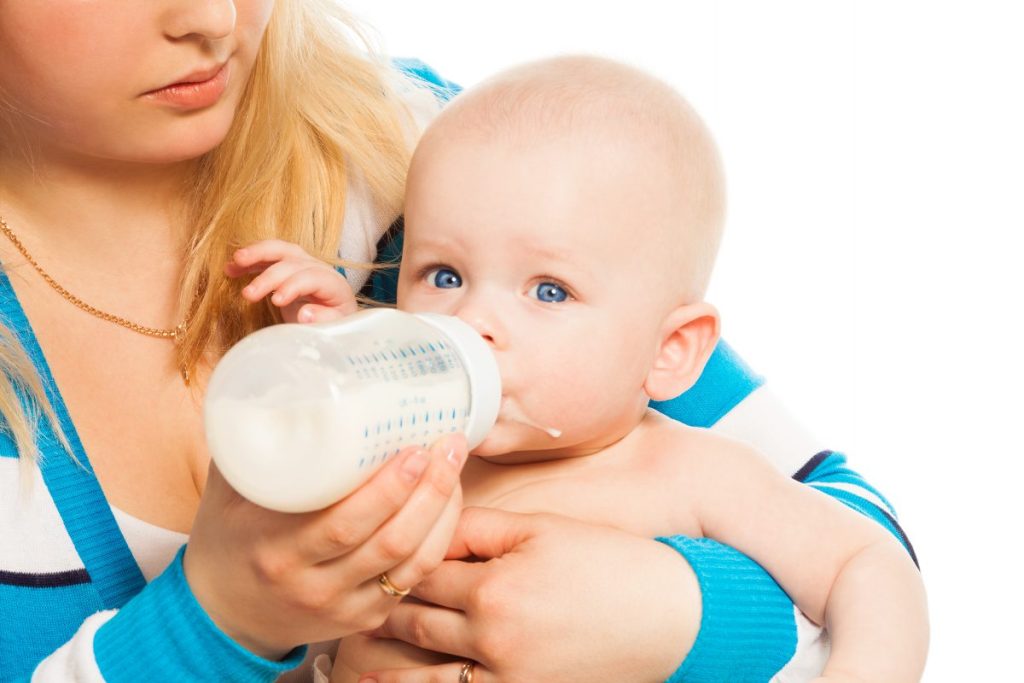
Paced bottle feeding is the best way to feed a bottle. For breastfeeding mothers, it’s a method of feeding that mimics breastfeeding which can help prevent a flow preference down the road.
However, regardless of if your bottle has breast milk or infant formula in it, paced feeding is beneficial. Rather than just giving your baby an entire bottle at whatever pace it empties at, you allow your baby to be in control of the process and pace their own feeding experience.
It allows your baby to eat at a slower pace and encourages them to work harder to get the milk just as they would while breastfeeding. It becomes more active than passive – and it encourages intuitive eating to allow themselves to know if they have gotten enough milk.
Another benefit of paced feeding is that it prevents the baby from over-eating and getting uncomfortable. Knowing how to paced feed your baby could be a game-changer in making that occasional (or everyday!) bottle a better experience.
This method is certainly contrary to what you may. have grown up seeing – especially on TV. However, by using a different position for both the baby and how you hold the bottle, it can make such a big difference! While this method is often mentioned for breastfeeding, it is also ideal for formula feeding as well. It’s not uncommon to overfeed formula in a bottle and paced feeding is beneficial for all baby!
How to get expressed milk for a bottle
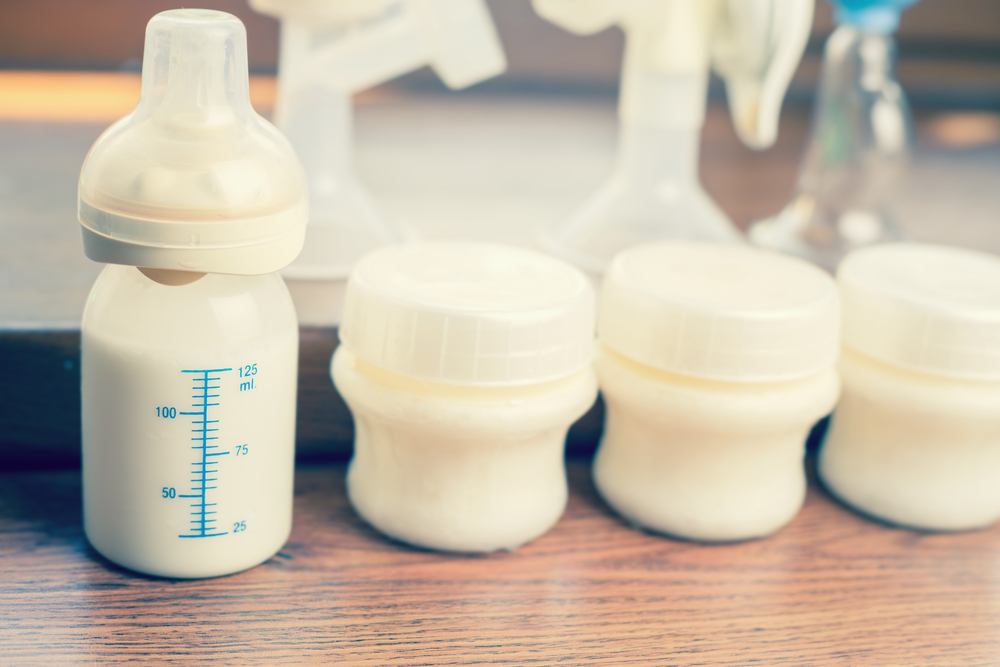
New moms who want to give a bottle might be wondering how they can get breast milk to give to their baby in a bottle.
There are a couple of ways – you can either use a breast pump of some type or hand expression.
Hand expression takes some practice, but it can be a great way to get a little bit of extra milk. When you first give birth and are producing colostrum, hand expression can actually be more successful than using a pump. This is due to the fact that colostrum is very thick, and sometimes, pumps aren’t able to draw it out as easily. You can learn more about hand expression here – How to Hand Express Breast Milk – and the Amazing Reasons Why All Moms Should Know How to!
Once your milk production has ramped up and you’ve transitioned to mature milk, a breast pump is usually the best option for getting milk for a bottle. In the first few weeks, I don’t recommend pumping much in addition to breastfeeding to ensure your supply regulates properly. But if you want to give a bottle in place of a feed, you can certainly pump.
A lot of moms really like using a Haakaa silicone breast pump in the early weeks. It doesn’t require a lot of extra effort, and you can actually get a good amount of milk.
Don’t have a pump yet? Check out our pump buying guide for help picking one out!
When do introduce a bottle?
Knowing the right time to introduce a bottle when you are an exclusive breastfeeding mom can be tricky. I find that the best time to introduce a bottle in the early weeks is after breastfeeding is established, baby is nursing well, and you aren’t concerned about their ability to nurse. Most of the time, I would not recommend a bottle in the first week, unless necessary.
Of course, there is no perfect time that works for every baby. Sometimes, you will need to introduce a bottle earlier on, especially if your baby isn’t nursing well. This is a situation where paced feeding can be super helpful.
If you want your baby to take a bottle at some point and breastfeeding is going well, I usually find offering once a week starting around 2-3 weeks works well for most babies. Then, at about a month, offering a snack bottle once a day is a great way to help prevent bottle refusal. I talk a lot about breast refusal due to bottle use, but bottle refusal can be equally frustrating! A snack bottle is a small amount – usually just .25-.5 ounces – that helps keep the baby used to the bottle.
Best Bottle for Breastfed Baby
There are a lot of different bottles and bottle brands out there – I find it so hard to keep up myself! Finding a good bottle for your baby might take some time. This is a whole other post in and of itself, but in general, here are a few things to keep in mind:
- Nipple shape matters! You want your baby to get a nice latch onto the nipple of the bottle. I recommend getting a bottle with a nipple size that gradually changes from the nipple to the base rather than a super abrupt change.
- Does the nipple of the bottle look compressed or flattened? Avoid these types of bottles. You want it to be similar in shape to your nipple, which is more rounded.
- There are a lot of bottles that are being marketed toward breastfeeding moms that claim they are “just like the breast” because they look like the breast. Some people have good success with these, but I think they are more gimmicky than anything.
- Don’t worry about getting bottles with huge capacities – the max I usually recommend being in a bottle is five ounces, so no need for 8 ouncer!
- Choose a bottle that has very slow flow nipples. I’ll talk about that more in a moment, but it’s important to remember to choose a bottle that you can purchase slow flow nipples for.
My personal favorite is Dr. Brown’s Original Bottle with a preemie nipple.
I find that most babies do well with these bottles, and they encourage proper latching and feeding. The baby should be able to get a good mouthful of the bottle teat – they won’t just suck or hang on to the end. Dr. Brown’s also has a glass bottle, which may be more appealing to some.
The preemie nipple flow is fantastic. It doesn’t come standard with the bottle but you can buy them on Amazon.com or at a Target.
My second choice is the Lansinoh bottle.
Awhile back, I did a post about the best bottles of breastfed babies on my other website. This was based on parent feedback, so you can read that entire post here – Best Bottles of Breastfed Babies.
What flow nipple should I use?
As I mentioned previously, flow rate is important. All nipples have a flow rate – what it’s called depends on the bottle brand. You’ll see everything from preemie, to 1,2,3, to fast and slow-flow nipple.
I always recommend starting with the slowest flow you can and that your baby does well on. There’s really no reason to go up in flow size, either, if your baby is drinking from it just fine. A baby taking a long time to eat a bottle is fine and not a reason to go up in flow rate.
Your nipple doesn’t really doesn’t change in size, so the bottle doesn’t either. The only exception I see to this is if a mom has a very fast flow, and that’s what her baby is more used to, so they may struggle with a very slow flow nipple. In that case, if your baby is refusing the bottle, it may be appropriate to go up a size in flow rate to help the baby take a bottle. You should still practice paced feeding.
The biggest reason I see babies developing a bottle preference is really more due to a flow preference. They are smart and decide that the fast flow rate of a bottle is a lot easier for them.
Most of the time, a bottle doesn’t come with their slowest flow of nipple so you may need to search around for the right one.
Here is a list of different slow flow nipples. This is not an endorsement of any of these bottles or their effectiveness – and there may be slower flow ones. Always look for the slowest flow you can find!
- Lansinoh Slow Flow Nipple
- Dr. Brown’s Preemie Nipple
- Nanobebe Preemie Nipple
- Avent Natural Newborn Nipple
- Nuk Simply Natural Slow Flow Nipple
- Nuk Perfect Fit Slow Flow Nipple
- Comotomo Slow Flow Nipple
- MAM Extra Slow Flow Nipple
- Gerber Slow Flow Nipple
- Medela Slow Flow Nipple
- Tommee Tippee Extra Slow Flow Nipple
Nipple confusion vs Nipple preference
I often hear people talk about nipple confusion – and usually it’s followed by, “Oh my doctor/mom/best friend/mom group told me nipple confusion doesn’t exist, so you can just feed your baby a bottle and breastfeed, no problem.”
I agree with one part of that – that nipple confusion doesn’t really exist. However, what does exist is a nipple/bottle/flow preference.
Babies are so, so smart. Pretty quickly, they can figure out that a bottle is an easier process to drink from than from the breast when paced feeding isn’t practice and fast flow nipples are being used.
While not all babies take issue with this, there are many babies who, when they realize the bottle is easier or they like the fast flow – may start to reject the breast.
How much milk should I put in a bottle?
I get this question on a daily basis – how much expressed milk should I put in a bottle?
I answer this question in depth – along with share a botle amount calculator – in this article – How Much Breast Milk in a Bottle – Baby Milk Intake Calculator
Your baby needs about 24-30 ounces in a 24 hour period after they hit about four months. That amount really stays pretty stagnant and shouldn’t change too much. The next time we see a real change is around 10 months, when the average drops to around 18.
If you are giving a bottle in addition to breastfeeding, I typically recommend 1-1.25 ounces per hour from the last time you nursed.
Benefits of Paced Feeding
There are many benefits to paced feeding. It’s truly a great way to feed your baby! Here are a few benefits:
- Makes bottle feeding more active than passive – similar to being at the breast
- Encourages baby to learn their hunger/fullness cues
- Helps maintain the breastfeeding relationship by not encouraging a bottle/flow preference
- Encourages responsive and baby led feeding
- Can help with gassiness and reflux, especcially if baby was getting overfilled before
- Can help prevent overeating and allow for appropriate weight gain
Paced Feeding Video
Below I will show how to paced bottle fed a baby. However, if you’d rather watch a video, here is a YouTube video I did feeding my nephew a bottle. It can be helpful to see how a real live baby responds!
How to Paced Bottle Feed a Baby

- Fill a small bottle with an appropriate amount of milk – either expressed breast milk or a bottle of formula. Choose a bottle with a slow flow nipple to encourage slower-paced feeding.
- Hold your baby in an upright position at about a 45-degree angle. Avoid having the baby lay down as it minimizes their ability to control the amount of milk they are consuming. Remember- you want your baby to be in control and not just to have the milk flow into your baby’s mouth.
- Tickle your baby’s upper lip with the bottle getting them to open wide and accept the bottle into their mouth – don’t force bottle teat into the baby’s mouth. It’s always a good idea to have them draw the nipple in, especially the first time you offer the bottle. Make sure that your baby has a good latch on the nipple of the bottle nipple as if they were nursing at the breast – if they don’t latch onto the bottle correctly, they will start to be lazier at the breast.
- Hold the bottle parallel to the floor preventing the nipple from fully filling up with milk. This will help your baby eat more slowly and require more work to get the milk as the baby sucks
- Feed baby until you start to notice they are slowing down with sucking and swallow pattern.
- Let your baby drink for about 15-20 seconds before tipping the bottle back, emptying the nipple of the milk.
- Tickle the baby’s lips again with the bottle, encouraging them to draw the nipple back into their mouth.
- Allow your baby to continue sucking until they decide to take a short break and you notice the slowing down again. After the baby starts sucking again, lift the bottle back into the flat position, and allow your baby to drink for another 15-20 seconds before repeating the same process.
- Eventually, during the short break, your baby will not start sucking again or just act uninterested. This means that they are full and have completed their feeding. You have successfully paced fed your baby!
- There is no reason to force or encourage your baby to take every little bit in their bottle!
- A full feeding can take anywhere from 15-25 minutes. This process shouldn’t be rushed, and it will be similar in length to a typical breastfeeding session especially in the beginning.
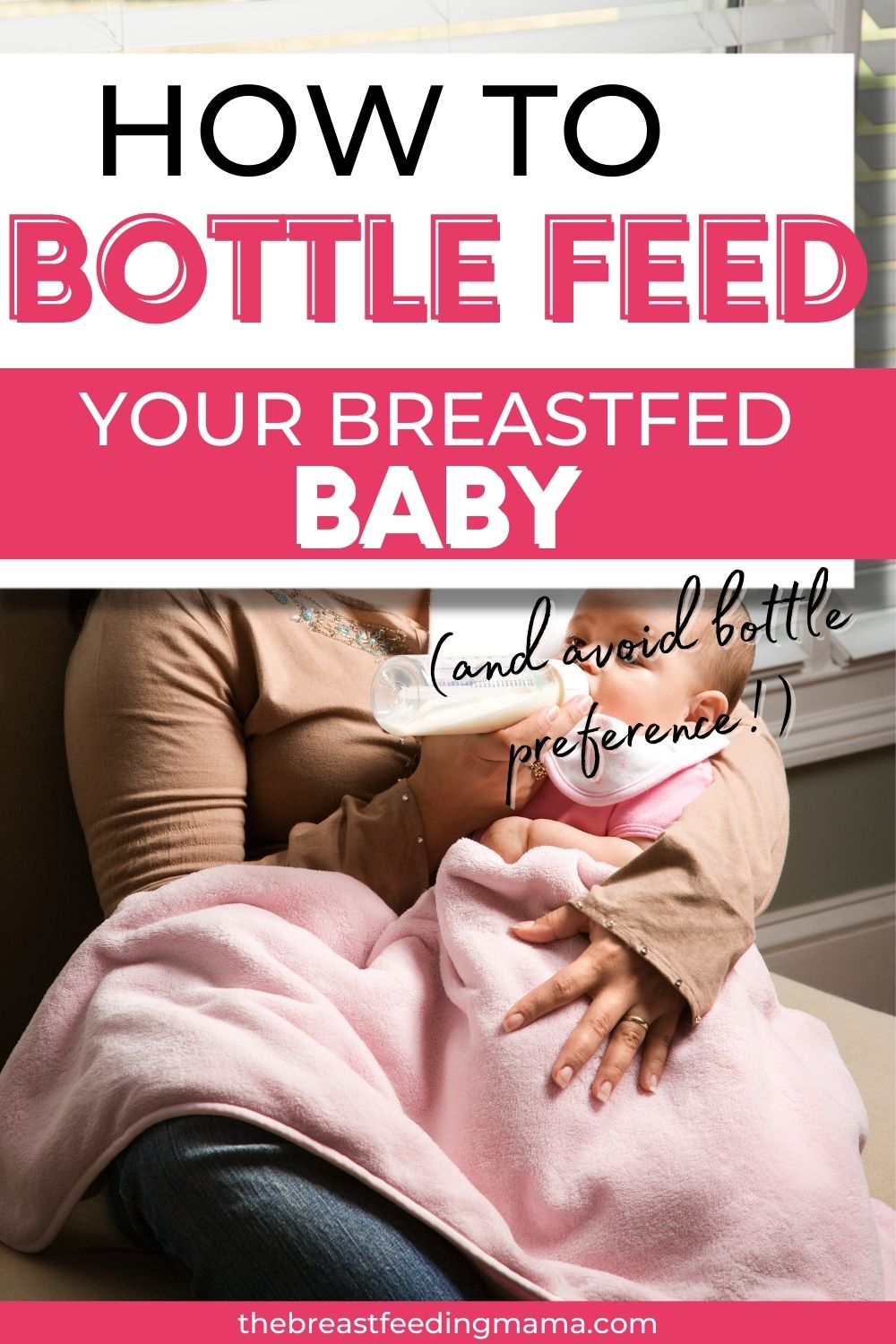
Most babies respond to paced feeding pretty well. However, some babies will have a hard time with it, especially if they are used to being fed a different way. I also find that babies who are used to moms who have a fast flow sometimes find paced feeding to be a bit slow for them.
Paced Feeding Printable
Here is a free paced feeding printable that you can print off for reference or to share with care providers.
How can I encourage my a baby to take a bottle?
It can be really hard when you want to give a bottle and your baby just won’t take one! I have another post I’ll share soon about this, but if your baby is refusing a bottle of breast milk or formula, I recommend a few things:
- Get them familiar with the bottle nipple without any bottle attached to it or milk near it. Just let them play with it, suck on it, and feel familiar with it.
- Express milk onto bottle teat so they can start to associate food with the nipple
- Offer the baby bottle when they are in a good mood and not overly hungry or starving.
- Some babies may respond better when they are more tired – others when they are more alert. Pay attention to the time of day that your baby seems most receptive to new things.
- Offer the bottle in a different place than they normally eat
- Try cold bottles, try warm bottles, try a bottle temperature bottle
- Have another family member or friend give the bottle.
- Test the milk to make sure it doesn’t have high lipase
The first bottle feed might be tricky – and it might take awhile to get your abby to want to take a bottle. But time and persistence usually does pay off.
What is combination feeding?
Combination feeding is when you feed your baby both breast milk and formula. Many parents do this for one reason or another. You can paced feed with both breast milk and formula!
What should I give as a supplement?
If you are supplementing, you can use either your own expressed breast milk, donor milk, or baby formula if your child is under one year.
Alternatives to bottle feeding
If you don’t want to give a bottle – or your baby refuses one – here are a few different alternatives
Younger Babies
You can do syringe feeding/finger feeding, spoon feeding, cup feeding (with a small, clean medicine cup) or do larger amounts with something like the Kindest Cup, or use an SNS to encourage more time at the breast for the baby.
Older Babies
Once your baby is about six months, you could offer a sippy cup, a straw cupe, or just do regular open cup feeding. This can often be an easier option than trying to get a baby who doesn’t want a bottle to take one.
Paced bottle feeding definitely may feel foreign to you at first! However, it is extremely beneficial for your baby, and it’s ideal for helping to maintain the breastfeeding relationship. Let us know if you have any questions!

